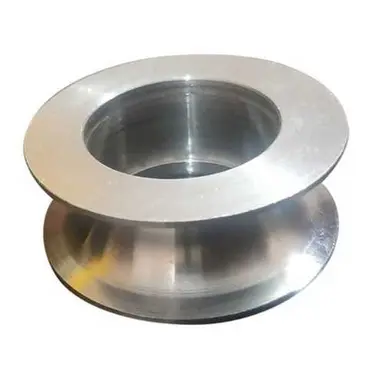Roller Bearing Sheaves
A roller bearing sheave is a type of pulley that uses roller bearings to reduce friction and increase efficiency. It is commonly used in various industries, such as manufacturing, construction, and transportation. This article will explore the features, advantages, and differences between a roller pulley and a flat belt pulley, as well as how to choose the right roller pulley for specific applications.
What is a Roller Pulley?

A roller pulley, also known as a roller bearing sheave, is a type of pulley that utilizes roller bearings instead of a traditional bushing or sleeve bearing. The roller bearings provide smoother rotation and reduce friction, resulting in improved performance and longer service life. Roller pulleys are commonly used in heavy-duty applications where high load capacity and efficiency are required.

Advantages of Roller Pulley

- High Load Capacity: Roller pulleys are designed to handle heavy loads and provide reliable performance even under extreme conditions.
- Reduced Friction: The roller bearings in a roller pulley significantly reduce friction, resulting in smoother operation and less wear on the components.
- Increased Efficiency: The low friction of roller pulleys allows for more efficient power transmission, resulting in energy savings and improved overall system performance.
- Longer Service Life: The use of roller bearings in roller pulleys enhances durability and extends the lifespan of the pulley, reducing maintenance and replacement costs.
- Quiet Operation: Roller pulleys produce less noise compared to pulleys with traditional bearings, making them ideal for applications where noise reduction is important.
Difference between a Flat Belt Pulley and a Roller Pulley
A flat belt pulley uses a flat belt to transmit power, while a roller pulley utilizes roller bearings for efficient power transmission. The main difference lies in the design and mechanism of the pulleys. While both types serve the same purpose of transmitting power, roller pulleys offer superior load capacity, reduced friction, and increased efficiency compared to flat belt pulleys.
Choosing the Right Roller Pulley

When selecting or customizing a roller pulley, several parameters and practical conditions need to be considered:
- Load Requirements: Determine the maximum load the roller pulley needs to support to ensure safe and efficient operation.
- Belt Type and Size: Select the appropriate belt type and size that matches the roller pulley for optimal power transmission.
- Speed and RPM: Consider the rotational speed and revolutions per minute (RPM) requirements to choose a roller pulley with suitable bearing and lubrication capabilities.
- Environmental Conditions: Take into account factors such as temperature, moisture, and exposure to chemicals to ensure the roller pulley’s materials and construction can withstand the specific conditions.
- Installation and Maintenance: Assess the ease of installation and maintenance requirements of the roller pulley to ensure smooth operation and minimize downtime.
HZPT specializes in designing, developing, and manufacturing high-performance roller bearing sheaves, as well as procuring and exporting aftermarket automotive parts to meet the needs of all customers. Our products have gained popularity in the European, South American, and Australian markets, earning the trust of numerous clients. We prioritize product quality and uphold a “customer-first service” policy. With a young, vibrant, and capable team, we believe we can provide professional services to fulfill any requirements. One of our advantages is fast delivery. In China, we have a dedicated factory for new product development and OEM services. Additionally, we have a well-stocked warehouse and timely distribution to meet the needs of many customers. We continuously strive to improve our services and offer the highest quality products at competitive prices. We greatly appreciate any inquiries or feedback, so please feel free to contact us.